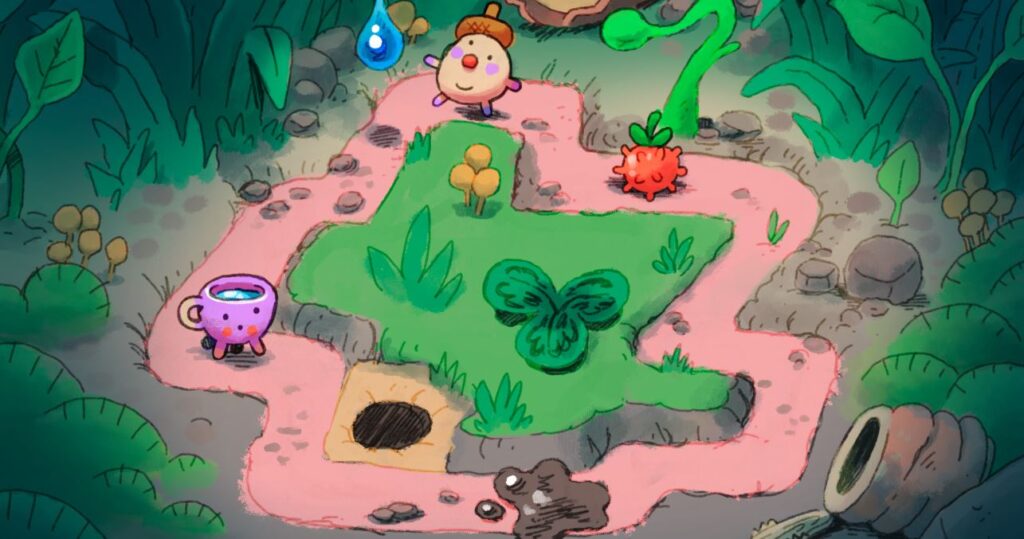Heya friendos! Today, I’ll provide an in-depth look at how I’m trying to become rich by making games. As of the date of writing, it hasn’t worked, but this might age into a fine anecdote someday in the future!
How Am I Doing?
Spring is officially here, and I’m trying to enjoy it to the fullest. I’m soaking in the sun every day, and go out to the park to work every now and then. That being said, I do feel like I’ve been pushing myself a little too hard when it comes to work.
For Project BuildyCrafty, I’ve been in game jam mode on our first prototype. There’s an excitement and creative fervor that comes with starting a new game project, and I try to ride it as long as I can before it fizzles out. The downside of that is that you get a little obsessed. I’m constantly thinking about ideas, design, and technical problems.
When the hype runs out, the crash tends to be quite hard. I’ve experienced that enough times now that I’m aware that it will come sooner or later. Generally, pacing yourself and maintaining life outside of work softens the landing. Now that I’ve noticed this behaviour and processed it, I’ll be able to do exactly that.
What Am I Doing?
Last week, I promised I would discuss our approach to trying to make a commercially viable game. The process we used to tackle this task wasn’t necessarily planned out beforehand but emerged organically as we got into it. So, keeping in mind that our goal is to make a game within the BuildyCraftySimulationy umbrella, we took the following steps:
- Isolate the genres within that umbrella that you’re interested in playing or making, or have no interest in at all.
- Go through those genres one by one and get some high-concept ideas rolling.
- Pick the ideas you’re most excited about.
- Design some preliminaries like pen and paper prototypes, mind maps, and sketches.
- Eliminate concepts that don’t yield enough ideas naturally.
- Weigh the pros and cons of each.
- Estimate the development time for winning ideas.
- Research and play similar games, both aesthetically and mechanically.
- Make prototypes for player feedback.
- ???????
- Profit!
Process of Elimination
Step 1 for us meant considering idle games, city builders, god games, deckbuilders, tower defense, automation, inventory management, sorting games, and whatever Dome Keeper and Loop Hero fall under. We ended up just calling them Dome-likes and Loop-likes. We’ve flirted with some other simulation-adjacent genres as well, but nothing really crystallized from there.
Jonas veers more towards a fantasy-first approach, whereas I tend to think more in bottom-up systems. Since we’re aiming for a marketable game, the fantasy-first approach won out for Step 2. It’s more reliable for generating good, descriptive hooks. We ended up with ideas along the lines of “you’re a mailman in space” or “you’re the mayor of a medieval hamlet defending against vampires.”

Usually, we already had a particular idea per genre that we were most excited about and brainstormed mechanics, aesthetics, and narrative. For Step 4 and 5 We did a couple of pen and paper prototypes, some sketching, and made mock “steam” descriptions to help us eliminate anything that didn’t feel natural.
After that process, we ended up with 5 winning concepts. The way we handled Step 6 by coming up with potential upsides and downsides and assigning them points. We considered things like: does this fit in an established audience, does it have tried and true mechanics, is the hook/fantasy easy to describe, replayability potential, and estimated price point. We then subtracted points for each con we could think of and ended up with 1 clear winner and 2 games tied for second place.
We took those 3 games and estimated the development time for each. This is what we call in Dutch, “nattevingerwerk” (lit. “wet finger work”), extremely inprecise ballpark estimations. I’ve dedicated an article on how I do that kind of stuff, but it always ends up being off by a wide margin. That being said, it’s still useful to compare the workload of each project, which we did. The clear winner from Step 6 took by far the largest amount of time. In the end, we rescoped some stuff and ended up with 2 roughly equally viable projects.
And that’s where we’re at now! I’m knee-deep in Step 9 for the first concept, and we’ll probably start thinking about a prototype for the other one sometime this week.
Why Am I Doing? (this)
I’ve been trying to log our process like this ever since we started. There are two reasons for that. First off, if we do manage to make a commercially successful game, we have the exact method to try and replicate that success. The other reason, conversely and most importantly, is that we can try to divine what’s wrong with the method if we don’t meet our goals at all.
I get the feeling that a lot of postmortems on game projects tend to be kind of “vibes”-based. There’s a lot of guesswork as to what went wrong and how to improve on it. Keeping detailed logs of the process at least provides you with a chronology of how and when we made certain decisions, which in the future would allow us to not repeat the same mistakes.
So voilà, you’re now up to date with our top-secret Method™. If we end up becoming millionaires after the first try, let it be known that it’s proven to work 😉 Keep an eye out for next week, we’ll have a prototype for y’all to test!
